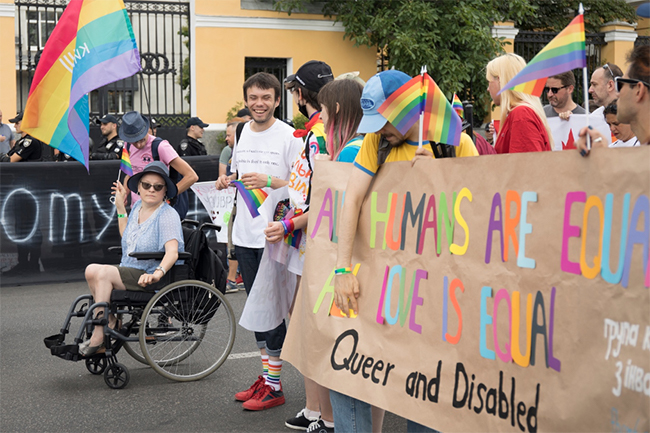
Pride Month is celebrated to honor the 1969 Stonewall Uprising as a tipping point for the Gay Liberation Movement in the United States and to recognize the contributions and impacts that lesbian, gay, bisexual, and transgender individuals have had on history. The Sexual and Gender Minority (SGM)* community is diverse in age, sex, race, ethnicity, and sexual orientation.
A subset of the community rarely highlighted is SGM persons with disabilities. Just as the disability community intersects with other minority groups, the SGM community is no exception. One in four transgender adults report living with a disability in the United States1, while one in four lesbian, gay, and bisexual adults in California reports living with a disability2. SGM persons with disabilities find themselves at the intersection of two vulnerable populations that are often subject to social stigmas and as a result experience greater disparity in areas such as income inequality, access to healthcare, and employment inequality.
One protection is the Americans with Disabilities Act3 (ADA), a comprehensive civil rights act, signed into law on July 26, 1990, which prohibits discrimination against persons with disabilities and guarantees people with disabilities have the same opportunities as everyone else to participate in the mainstream of American life. Still, persons with disabilities experience barriers to employment, with only 37% of adults with disabilities employed compared to 78% employment for those living without disabilities.4 This problem is compounded in the SGM population living with disabilities. While both communities struggle with employment, even when they are hired, the individual is often left to feel unwelcomed and isolated. One way to create an inclusive and welcoming environment is to use inclusive language in the workplace. Inclusive language acknowledges diversity, conveys respect to all people, is aware of differences, and promotes equal access and opportunities.
Another barrier the community faces is that of intersectional invisibility. As an individual holding multiple marginalized identities, there is often a failure to fully recognize persons with intersecting identities, as they do not fit the exact prototypes of their respective identity groups. By recognizing and celebrating the differences within the SGM community, we respect the unique background and experiences of its members, creating a more inclusive environment for SGM persons with disabilities.
By Christina Barnett, Management Analyst, NIH Ethics Office (NEO) and David Rice, Principal Strategist for People with Disabilities, Diversity and Inclusion Division, Office of Equity, Diversity, and Inclusion
Sources
- James, S. E., Herman, J. L., Rankin, S., Keisling, M., Mottet, L., & Anaf, M. (2016). The Report of the 2015 U.S. Transgender Survey. Washington, DC: National Center for Transgender Equality.
- MAP analysis of 2016 California Health Interview Survey.
- https://www.ada.gov/
- 2019 Annual Report on People with Disabilities in America. Institute on Disability. University of New Hampshire.
*"Sexual and gender minority" (SGM) is an umbrella term that encompasses lesbian, gay, bisexual, and transgender populations as well as those whose sexual orientation, gender identity, and expressions, or reproductive development varies from traditional, societal, cultural, or physiological norms. This includes Disorders or Differences of Sex Development (DSD), sometimes known as intersex.
Do you have a story idea for us? Do you want to submit a guest blog? If it's about equity, diversity, or inclusion, please submit to edi.stories@nih.gov.
For news, updates, and videos, follow or subscribe to EDI on: Twitter, Instagram, Blog, YouTube.






